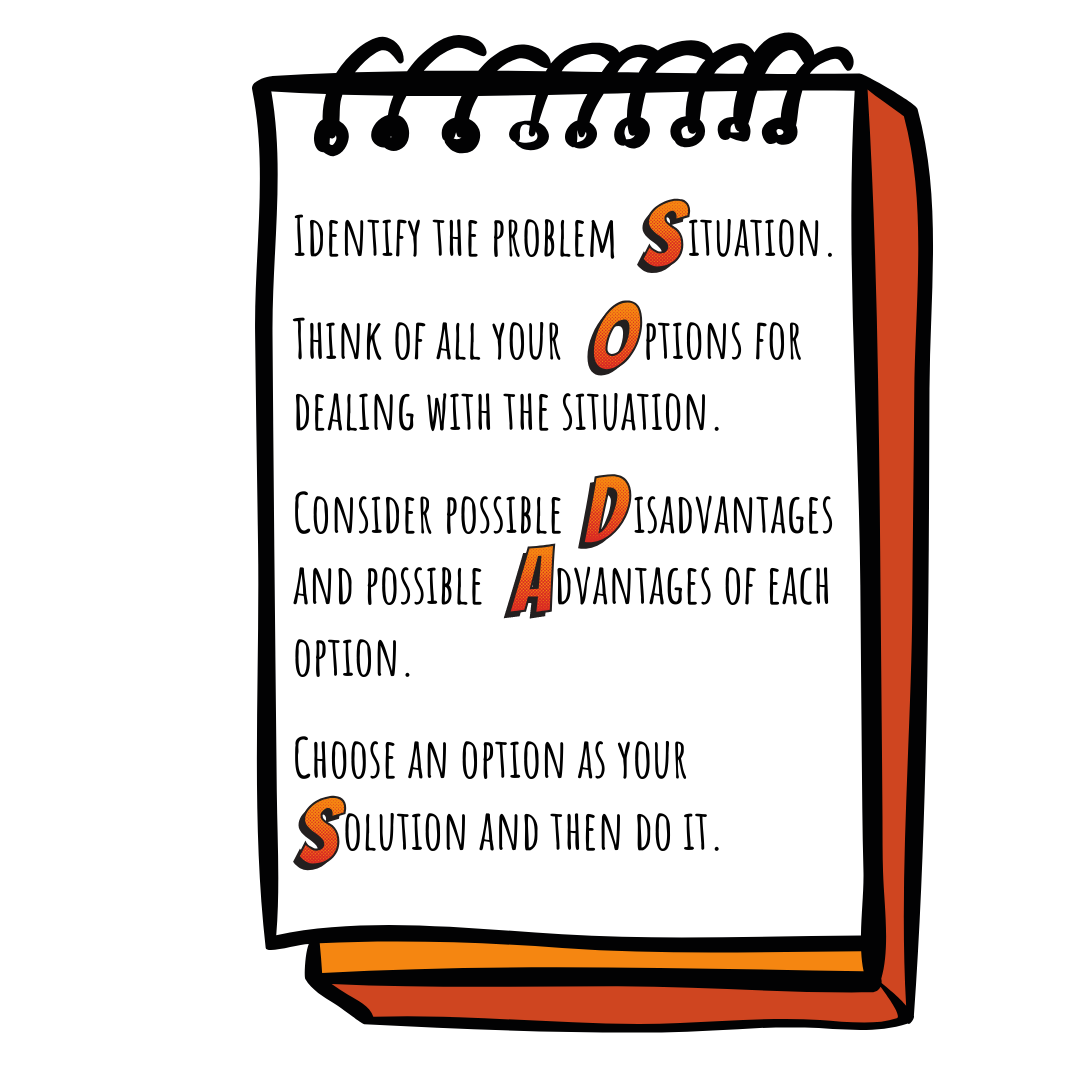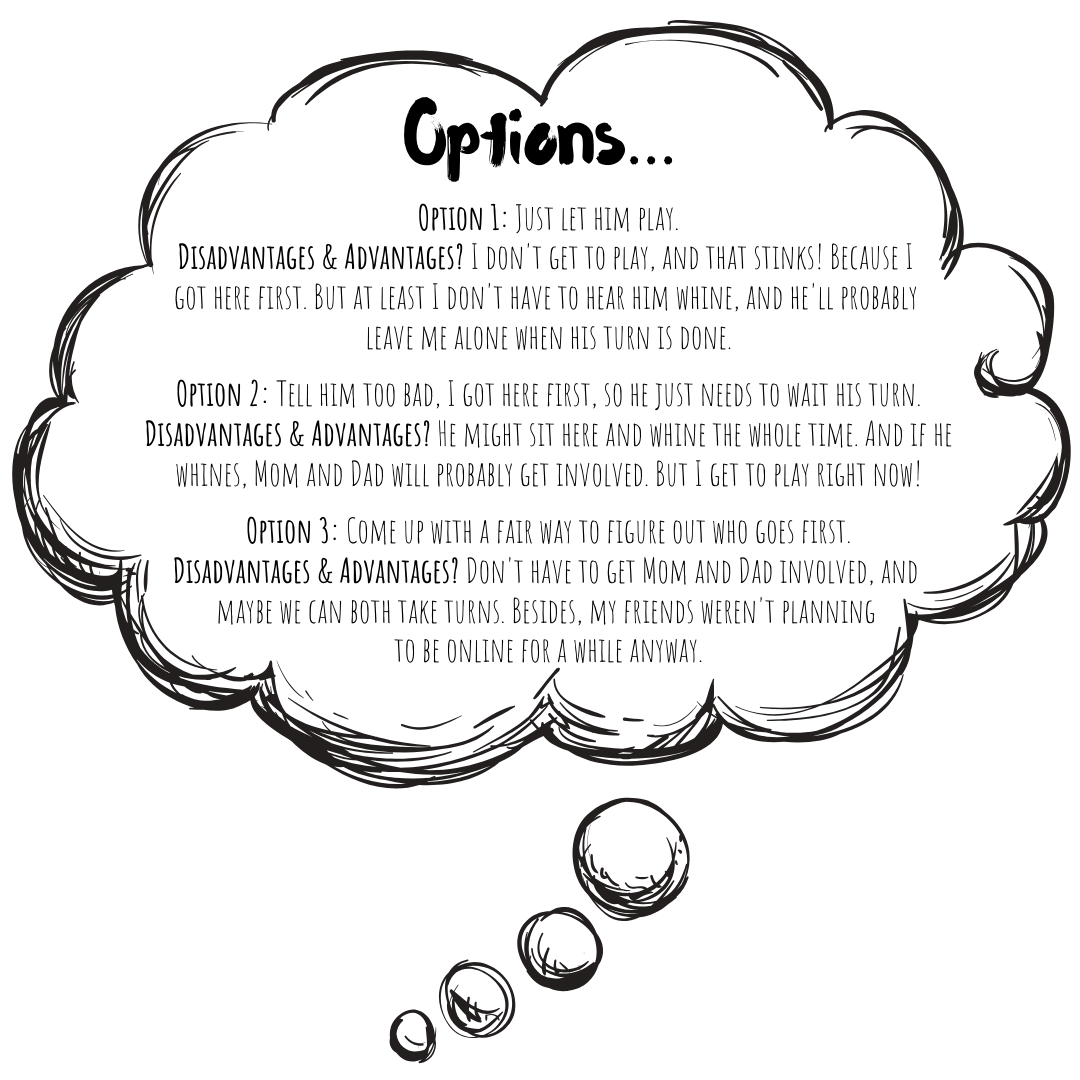What’s the Problem? Tips on How to Teach Kids to Solve Problems
Posted by Bryan Smith, Boys Town Press Author and Elementary School Counselor on May 13th 2019
“But, what’s the problem?”
Does this sound familiar? I hear this question from my students A LOT!
I find that my students struggle with understanding what a problem really is. Most assume that a problem is only a problem when it affects someone else, or when they see an immediate consequence for an action.
In reality, of course, there are long-term and unintended consequences that they may not see for a while. And there’s also the ironic realization that problem solving isn’t JUST about solving a problem. Problem solving can be about making a decision between two good or neutral options. Or brainstorming something fun or amazing!
This blog focuses on the issue that most kids define as a problem – a disagreement with a sibling or peer. But the good news is that the problem-solving process discussed here can be used to help resolve almost any problem-solving need.
Here’s an example. My oldest son has some free time, so I tell him, “You are welcome to do anything you want, as long as it doesn’t cause a problem to you or anyone else.” He decides that he wants to play a video game, and leave everyone else alone. In his mind, he came up with a solution, and he’s not doing harm to anyone else. But, what if my youngest son wants to play video games as well? My younger son runs to play the game and now there’s a problem. The tug of war match begins, fighting over the controller, and things are starting to take a turn for the worse.
If the boys used the SODAS technique, it wouldn’t have to look like this. The four-step process is designed to help take some of the emotion out of problem solving, and help people make better choices. Here are the four steps to problem solving:

Now, let’s take that same situation, but apply our SODAS technique. As my younger son walks in, he asks, “Can I please play the video game?”
My older son says, “After me.”
My younger son fights back, claiming, “That’s not fair! Dad gave me permission to play when I finished my homework.”
He says, “Well, I finished my homework too!”
Now, my oldest son tests out his problem-solving skills by using SODAS. He thinks in his head:

My oldest son thinks, there’s only one real solution: “Ok, we need to come up with a fair way to figure out who goes first. We can draw names, or how about rock, paper, scissors?”
“Okay, rock, paper, scissors it is!”
“All right, but remember the rules: Whoever wins goes first for 30 minutes, then the other person gets to play for 30 minutes, right?”
“Right!”
They both agree and the situation ends peacefully, and fair, without a fight over the controller.
Yes, you’re probably thinking, sure, okay that looks really simple! But what happens when it’s a really hard issue?
Well, problem solving, like all skills, needs to be taught. And like all new skills or processes, initially you may have to guide them to the solution. But once students get more comfortable with using it, they can start transferring that process to harder issues.
Tips to help your child learn the skill:
- Role-play and practice with the child to help him or her develop problem-solving habits. Alternate between fun topics, like, “Which ice cream topping do you want today – hot fudge or whipped cream?” and others, like, “You have two subjects for homework tonight. Which will you work on first – math or social studies?”
- When problems arise, walk your child through what he or she could have done differently.
- Be sure to give your child time to calm down if the situation escalates.
As a parent, educator, or both, teaching these skills will certainly help the kids in your life, and will help you as well.
For more ideas to help children with problem solving, check out my book titled What’s the Problem?
